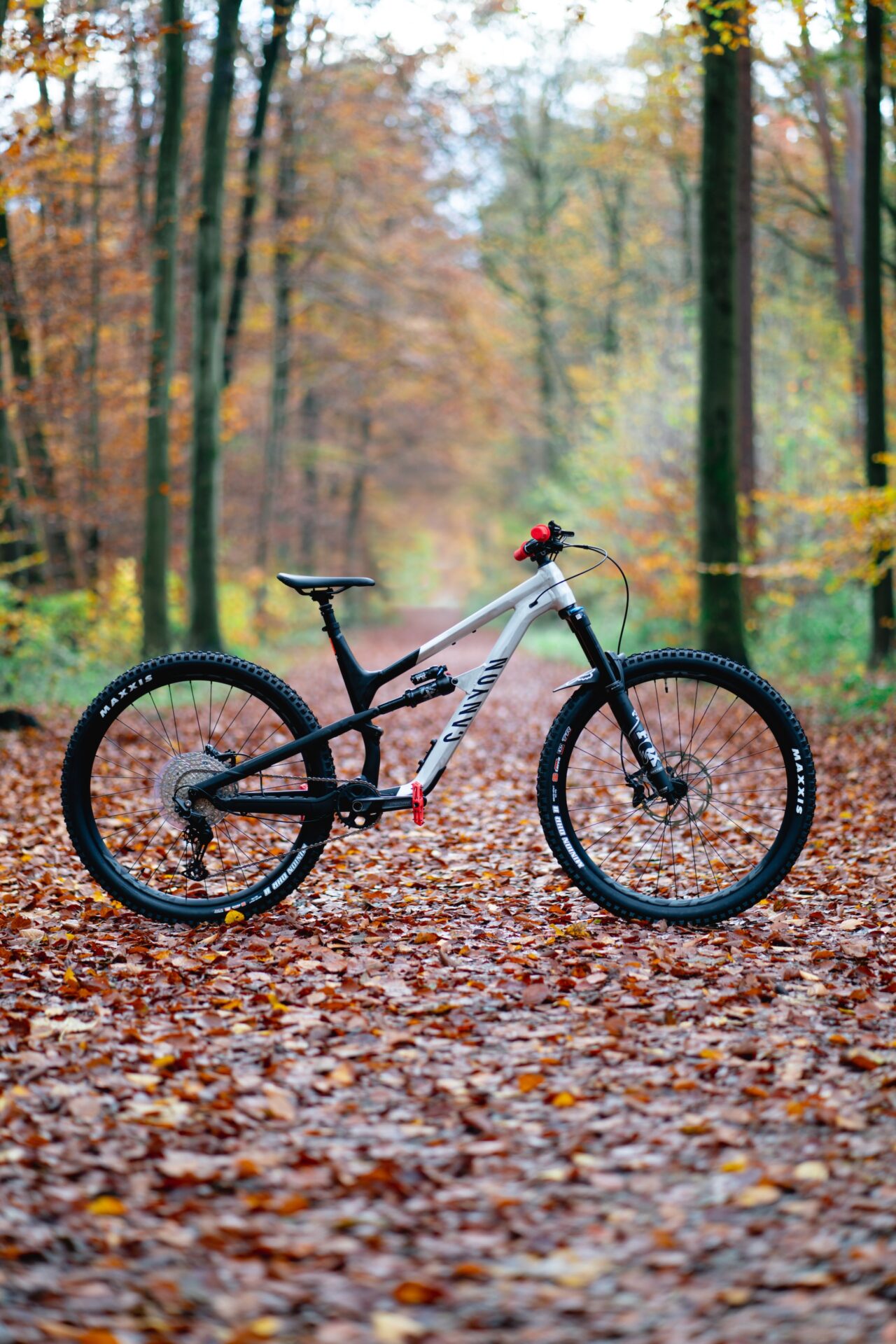Mountain biking is a great way to explore the outdoors and the views that come with the journey. Before you embark on your outdoor adventure, it is essential to make sure you choose the right size mountain bike for your height. Having the wrong size bike can leave you feeling uncomfortable and frustrated. This article will guide how to determine the proper size bike for your height.
Height Measurement
Before purchasing a mountain bike of the right size, it is essential to measure your height accurately. To do this, stand up straight and remove any hats or footwear. Use a measuring tape away from your spine, from the crown of your head to the floor. It is important to remember that the measurement should be taken with your spine in a straight and natural position. Record the size in either cm or inches.
Understanding Frame Size Chart
After measuring your height accurately, it is crucial to understand the frame size chart of a mountain bike. Every bike brand and model offers a different range of sizes that depend on your body height. This size chart can be found online, and it will estimate the correct frame size of the bike according to your body height.
Choosing the Right Bike Size
Now that you have an idea of the right size mountain bike for your height, it is time to purchase the right bike. Most bikes have a size tag on them, and this is the size that you should go for. It is essential to understand that different bike brands and models have different sizes, and it is best to look for the one that suits your height the most. You can also consult a bike store professional to get the right size.
Test-Riding The Mountain Bike
The best way to determine whether or not a mountain bike is a suitable size for your height is to test-ride it. Sit on the bike seat and measure the distance between your feet and the ground. If you can touch the floor without putting too much effort into reaching it, the bike is the right size. However, the bike is too small for you if you cannot get to the ground without stretching.
Adjusting Your Mountain Bike
Even if you purchase the correct size mountain bike for your height, it is essential to adjust the cycle accordingly. The handlebar stem, saddle, and other components might need adjustments to achieve the most comfortable and efficient ride. You may need to seek professional help to make the necessary adjustments.
Types of Mountain Bikes
When choosing a mountain bike size, it’s essential to consider the different types of mountain bikes and the terrain you’ll be riding. Mountain bikes are designed for different types of riding, from cross-country and downhill to dirt jumping and freeride, so it’s essential to determine which type of mountain bike you’ll be using before choosing a size.
Cross-Country Mountain Bikes
Cross-country mountain bikes, also known as XC bikes, are designed for riding on varied terrain, from steep ascents to flat and fast descents. They’re typically lightweight for speedier climbing and have stiffer components for faster handling. Mountain bikes designed for cross-country riding usually have 29-inch wheels and slightly longer chainstays and wheelbases than their downhill counterparts.
Downhill Mountain Bikes
Downhill mountain bikes, also known as DH bikes, are designed to handle the steepest and most challenging terrain. Downhill mountain bikes are typically heavier and more robust than XC bikes, with longer wheelbases, slacker head angles, and more vertical seat tubes for greater control on steep descents. Most downhill mountain bikes have 27.5-inch or 26-inch wheels and are designed for the most extreme riding.
All-Mountain Mountain Bikes
All-mountain mountain bikes fall between cross-country and downhill bikes. These bikes are designed to handle steep descents but are also lightweight enough to climb. All-mountain mountain bikes typically have slacker head angles, shorter chainstays, and slightly longer wheelbases than XC bikes. They also usually have 27.5-inch wheels and sturdier suspension than XC bikes.
Choosing the Right Size Mountain Bike
Knowing the different types of mountain bikes is the first step in selecting the proper size for your height. Your height, inseam length, and desired riding style will all affect the size of the mountain bike that is best for you. Paying attention to the geometry of mountain bikes and taking measurements of your body can help you find the perfect size mountain bike for your body type.
Matching Frame Size to Height
Choosing the right size mountain bike for your height is essential to ensure a comfortable and efficient ride. Generally speaking, your bike frame should be proportional to your body size. It would help if you used your height as a guide to finding the perfect frame size for mountain biking.
Size Chart for Mountain Biking
When it comes to mountain biking, there is no one-size-fits-all approach, as different riders prefer different styles and riding conditions. However, a general size chart can help narrow down your choices. The following size chart provides a rough guide for choosing the right size mountain bike for your height:
- 4’11”- 5’3″ (148-159cm): 13″ – 14″ frame
- 5’3″ – 5’7″ (159-169cm): 15″ – 16″ frame
- 5’7″ – 5’11” (169-180cm): 17″ – 18″ frame
- 6’0″ – 6’2″ (182-188cm): 19″ – 20″ frame
- 6’2″ – 6’4″ (188-194cm): 21″ – 22″ frame
- 6’4″ and up (194+cm): 23″+ frame
Adjust the Frame Size
This size chart should only be used as a rough guide. The actual fit may vary depending on the type of bike and its components. You should also adjust the frame size when buying a bike to suit your needs. To do this, you can raise or lower the seat, adjust the handlebars and stem, and adjust the length of the cranks.
Test Riding the Bike
Before you purchase your mountain bike, you should also test-ride it if possible. This will give you a better understanding of the bike and how it feels on trails. If you don’t have the opportunity to test ride the bike, you should check with the manufacturer or shop to see if they have any advice or suggestions for sizing. The last thing you want is to be stuck with the wrong-size mountain bike.
Adjusting the Bike’s Setup
Mountain biking can be an exciting outdoor activity. Experienced riders know that choosing the right size mountain bike for their height is critical for a safe and enjoyable experience. This section will explain how to choose the right size mountain bike for your height, as well as how to adjust the bike’s setup to ensure optimum performance.
Factors to Consider when Choosing a Mountain Bike
When picking out a mountain bike, it is crucial to consider factors such as frame size, wheel size, handlebar height, and stem length. All of these factors should be adjusted to fit your height. Generally, the taller you are, the bigger the frame will need to be.
Measuring Your Height for the Right Mountain Bike
The first step in finding the right mountain bike size is measuring your height. Stand straight up with your back against a wall and mark the tallest point. Measure the distance from the floor to the marked point. Most mountain bikes come in four sizes: Small, Medium, Large, and Extra-Large. The following table shows the recommended sizes based on rider height:
Size Chart for Mountain Bike Sizes
| Height | Mountain Bike Size |
|---|---|
| 5’0″ – 5’3″ | Small |
| 5’4″ – 5’7″ | Medium |
| 5’8″ – 6’0″ | Large |
| 6’1″ – 6’4″ | Extra Large |
Adjusting the Bike to Your Height
Once you have chosen the right size mountain bike for your height, it is essential to adjust the bike’s setup to ensure optimum performance. The saddle height and handlebar position must be adjusted for the ideal riding position. The saddle should be slightly higher than your hips, and the handlebar should be level with your shoulder blades. The stem length and angle should also be adjusted for a comfortable and efficient riding position.
Tips for Making Adjustments
When making adjustments to the mountain bike, it is essential to go slow and make small changes at a time. This will help you find the right balance between a comfortable and efficient riding position. Additionally, taking a test ride before making any significant changes is a good idea. This will help you identify any potential issues before they become a problem.
Test Riding the Bike
Mountain bikes come in various sizes, and it’s crucial to determine the size best suits the type of terrain and riding style you plan to do. If you plan to ride on terrain that requires a lot of pedaling and is rough, consider a bike with a longer wheelbase and greater clearance. For smoother trails and long-distance cross-country rides, a shorter wheelbase and lower bottom bracket may be a better choice. Consider the type of brakes, gears, and suspension you prefer, as each will influence your bike’s handling.
Finding the Right Frame Size
Once you’ve determined your ideal riding style and the features you want, you can start looking for bikes that fit your size. The frame size of a mountain bike is determined by measuring the distance from the center of the bottom bracket to the top of the seat tube. Generally, mountain bikes come in X-Small, Small, Medium, Large, and X-Large sizes. The frame size should correspond to the rider’s height; for instance, someone 5 feet tall should look for an X-Small frame.
Test Riding the Bike
Once you’ve narrowed your options, it’s time to test-ride the bike. Make sure to wear the same shoes and clothing you’ll wear when you ride. Before pedaling, get a feel for the bike and check the seat and handlebars to see if they are at comfortable heights. While pedaling, pay attention to how the bike feels and if you’re experiencing any pain or awkwardness. After riding, take note of how the bike feels and if you think it is the right size. If you’re unsure, ask an experienced bike shop employee for assistance.
Understanding the Right Fit
Choosing the right size mountain bike for your height requires understanding the necessary type of fit. While some riders prefer longer or shorter cycles than they need, the correct size should provide optimum control and comfort while riding. A mountain bike should not be much longer or more concise than the rider’s inseam. To measure inseam, stand flat-footed and measure from the crotch to the ground. The size chart for mountain bikes shows the approximate bike frame size for a given rider’s inseam. Knowing the bike frame size is the first step to choosing the best size mountain bike for your height. Other factors such as body shape, personal riding style, and desired riding experience can also have an impact on the size of the bike you should choose. Ultimately, taking a test ride is the best way to ensure the correct size bike.
Finding the right mountain bike size for your height is essential to your comfort and ability to ride safely. Understanding the right fit and taking a test ride will ensure you find a bike with the best riding experience.






Leave a reply